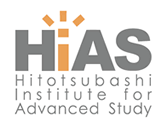Tariffs, R&D, and Two Merger Policies
Abstract:
In an international Cournot oligopoly model, we compare two different merger policies when firms are merging endogenously and engage in research and development (R&D). In the benchmark model, countries set optimal tariff levels but do not have merger policy. If ex-ante identical firms merge internationally, they have an ex-post cost advantage over the outsiders due to tariff savings. This gives the merger an incentive to increase its R&D investment, which increases the cost dispersion further; therefore, the merger paradox, where each firm wants to be an outsider, disappears when R&D is efficient. As a result, we find different equilibrium market structures depending on the efficiency of R&D. In the second part, we compare two different merger policies, one that puts emphasis on welfare (roughly the Canadian merger policy) and another one that puts emphasis on consumer surplus (roughly the European Union’s merger policy). We show that under the “welfare-increasing” merger policy, monopoly is the equilibrium market structure when R&D is very efficient. This explains why a merger, which created a monopoly, was approved in Canada. As R&D becomes less efficient, the equilibrium market structures become less concentrated under the two different merger policies. Each merger policy can be global welfare maximizing depending on the efficiency of R&D; however, the “consumersurplus-increasing” merger policy is optimal for a wider range of parameters.
| Report No.: | HIAS-E-53 |
|---|---|
| Author(s): | Mehdi Arzandeh(a) Hikmet Gunay(a) |
| Affiliation: | (a) Department of Economics, University of Manitoba |
| Issued Date: | September 2017 |
| Keywords: | Competition Policy, Merger Policy, R&D, Endogenous Mergers, Tariff, Trade Policy, Cournot oligopoly, Merger Paradox |
| JEL: | |
| Links: | PDF, HERMES-IR, RePEc |











